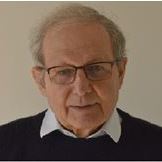Phase Change Materials: Characterizations for Uses
A special issue of Materials (ISSN 1996-1944). This special issue belongs to the section "Smart Materials".
Deadline for manuscript submissions: closed (31 May 2021) | Viewed by 2845
Special Issue Editor
Special Issue Information
Dear Colleagues,
Phase change materials have long been used to control heat exchange or store thermal energy. The idea was to take advantage of the latent heat of melting or crystallization and thus of the variation of thermodynamic properties at phase changes. Despite the numerous works presenting these materials and their configuration, it must be admitted that the “true” physical and especially thermodynamic characteristics are not always convincingly determined.
Almost all studies, especially by calorimetry, conclude that what you see is what you get, i.e., that there is no deconvolution of the signals to find the universal thermodynamic properties. On the contrary, what is seen is considered to be the physical truth. As a result, significant errors in charge-discharge temperatures (in particular by inventing a hysteresis phenomenon), on energies...are included in technical software. Software does not always admit true thermodynamic properties, for example, when they show discontinuities. Papers with research aimed at improving this software would be welcome.
It is also time to justify the very significant efforts made to increase the thermal conductivity of PCMs. Under what circumstances is this increase beneficial (and therefore cost-effective) when the kinetics of fusion is essentially controlled by the amount of latent heat and the external heat exchange conditions?
Among the papers on PCMs, many reviews simply copy the results of other researchers without criticizing them or even presenting any consistency. It might be interesting to write critical articles on methods of investigation.
Of course, it can always be interesting to explore the properties and advantages of more sophisticated PCMs such as different types of encapsulation, slurries, gas hydrates, eutectics, peritectics, solid solutions. Similarly, supercooling and crystallization kinetics can be developed.
Prof. emer. Jean Pierre Dumas
Guest Editor
Manuscript Submission Information
Manuscripts should be submitted online at www.mdpi.com by registering and logging in to this website. Once you are registered, click here to go to the submission form. Manuscripts can be submitted until the deadline. All submissions that pass pre-check are peer-reviewed. Accepted papers will be published continuously in the journal (as soon as accepted) and will be listed together on the special issue website. Research articles, review articles as well as short communications are invited. For planned papers, a title and short abstract (about 100 words) can be sent to the Editorial Office for announcement on this website.
Submitted manuscripts should not have been published previously, nor be under consideration for publication elsewhere (except conference proceedings papers). All manuscripts are thoroughly refereed through a single-blind peer-review process. A guide for authors and other relevant information for submission of manuscripts is available on the Instructions for Authors page. Materials is an international peer-reviewed open access semimonthly journal published by MDPI.
Please visit the Instructions for Authors page before submitting a manuscript. The Article Processing Charge (APC) for publication in this open access journal is 2600 CHF (Swiss Francs). Submitted papers should be well formatted and use good English. Authors may use MDPI's English editing service prior to publication or during author revisions.
Keywords
- PCM
- characterizations
- calorimetric technics
- heat conductivity enhancement
- deconvolution of signals
- thermal energy storage
- thermodynamic and thermal properties






